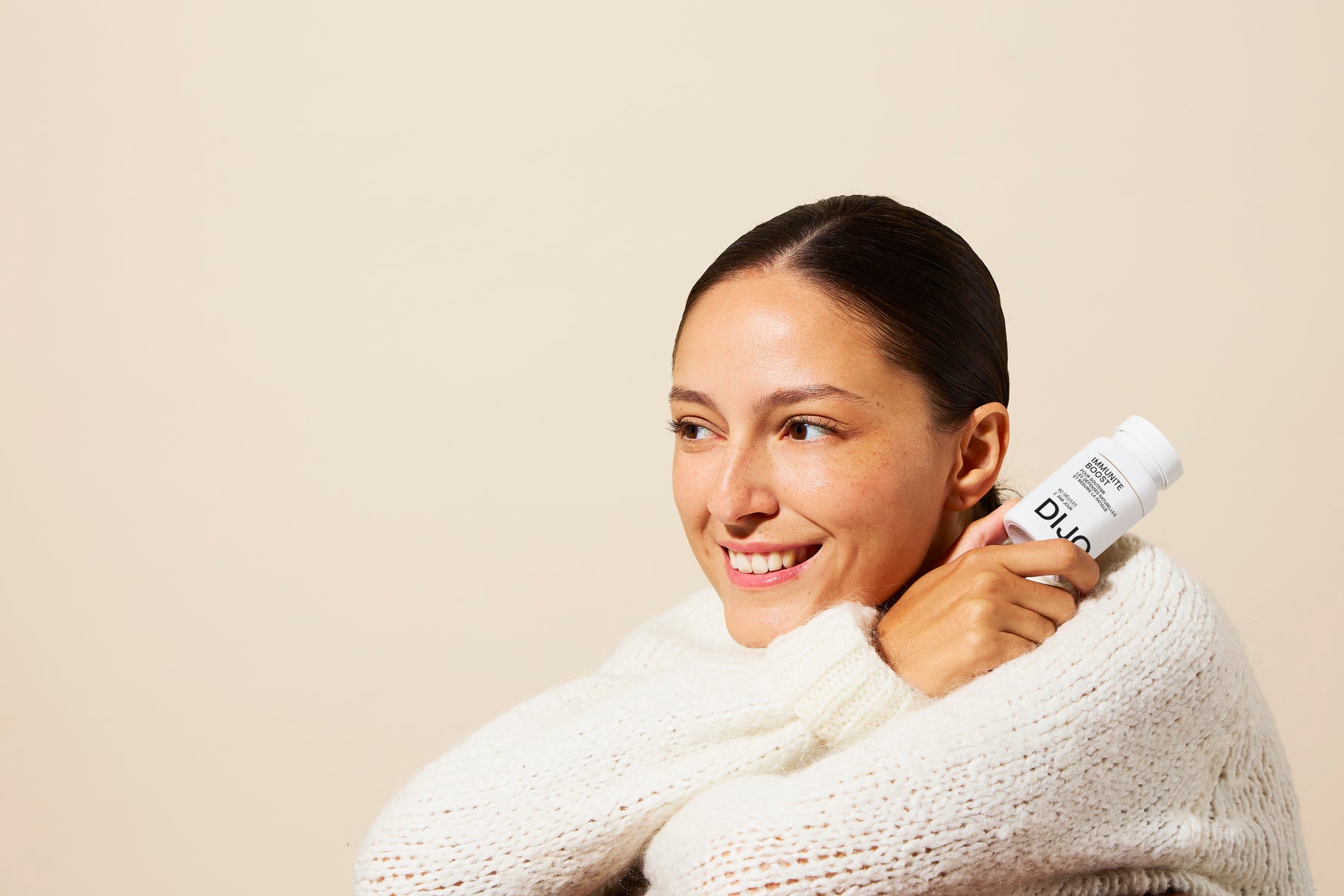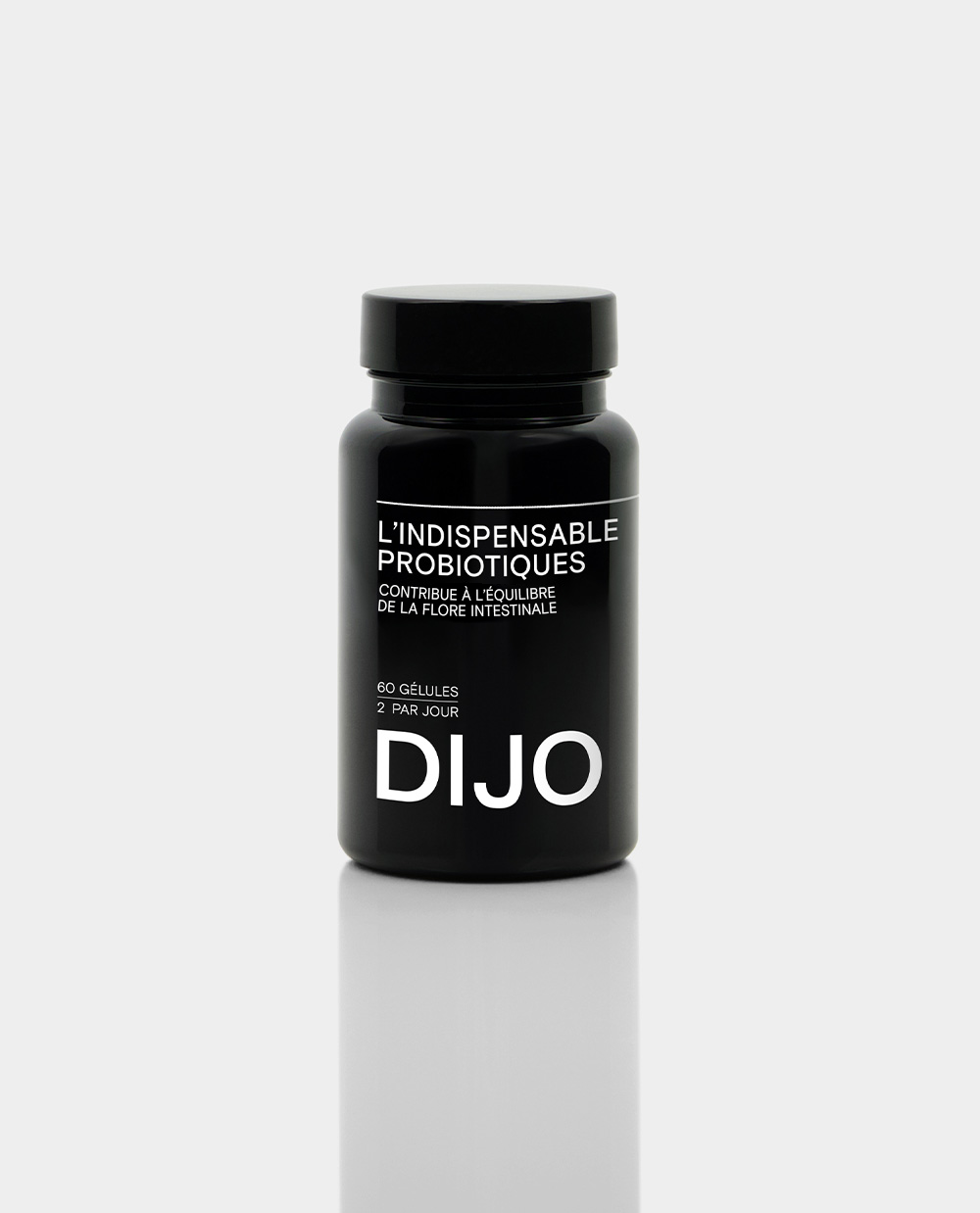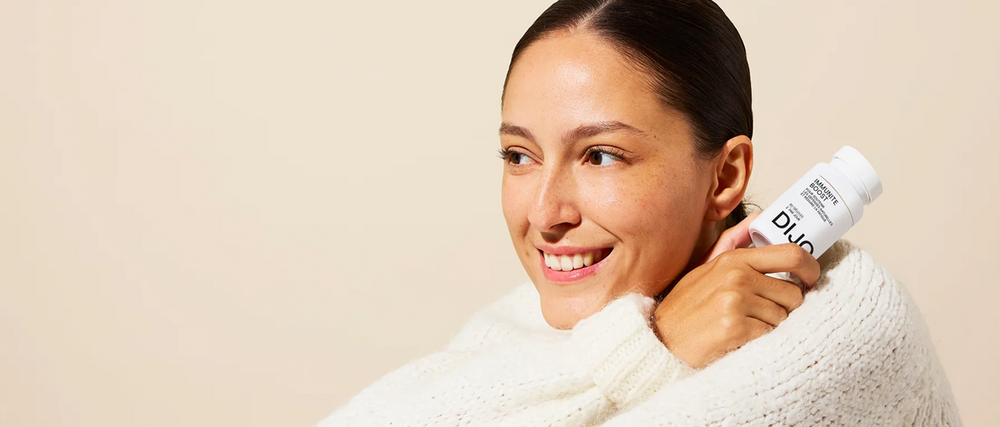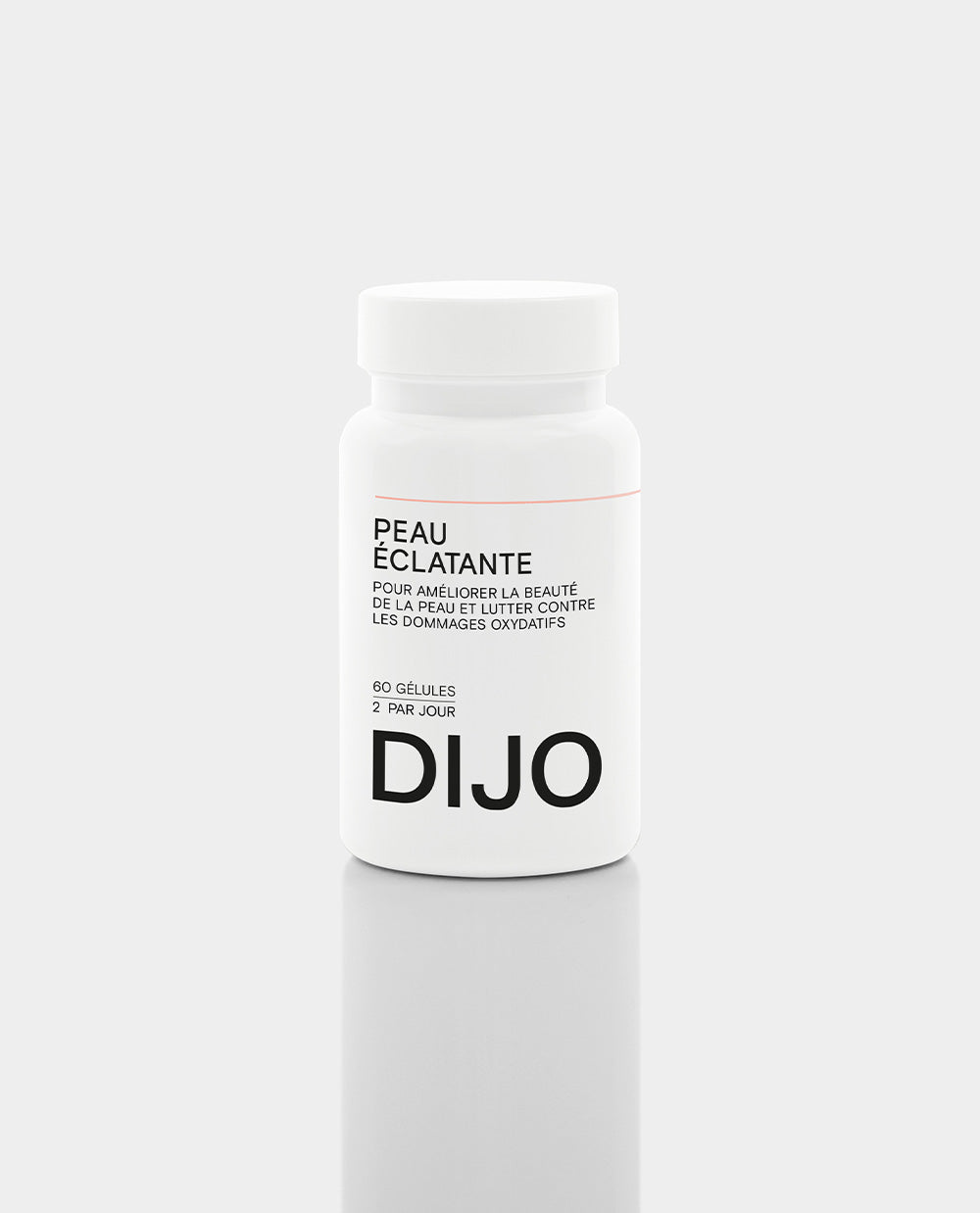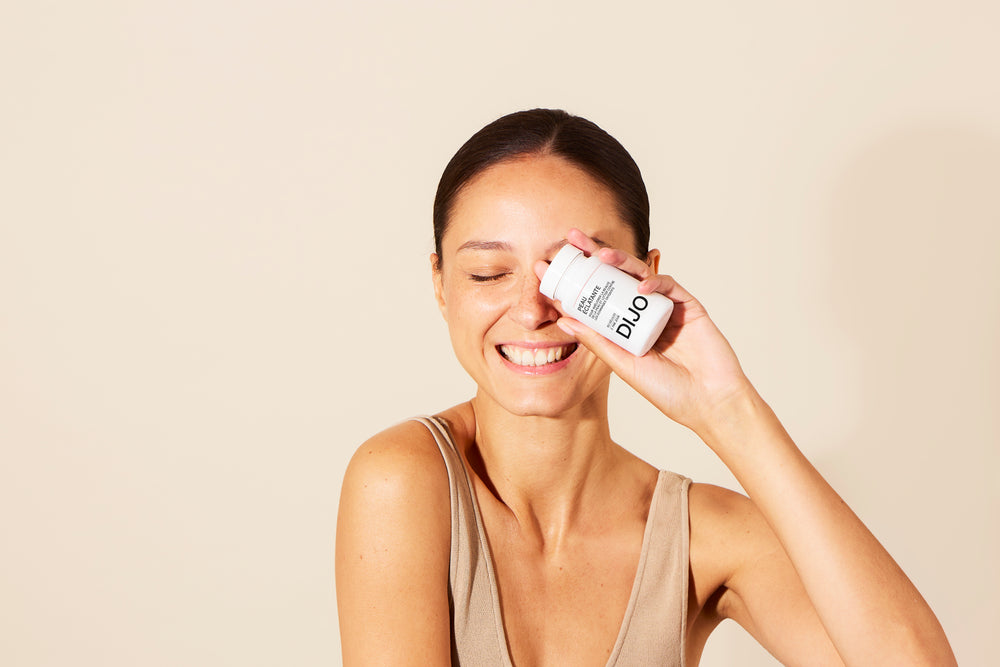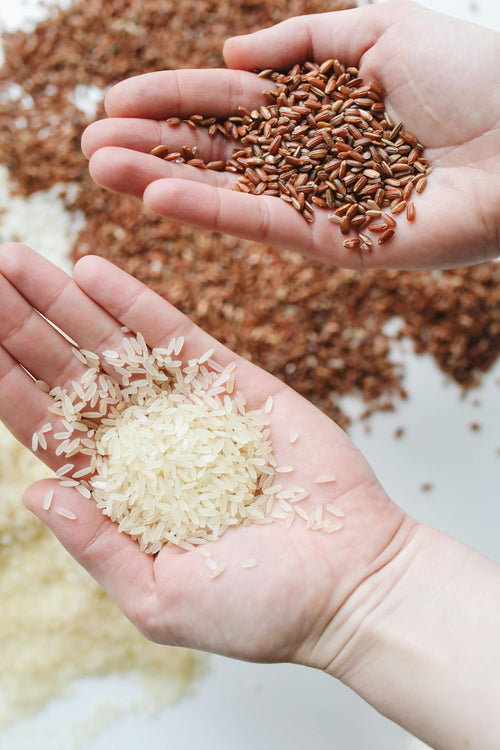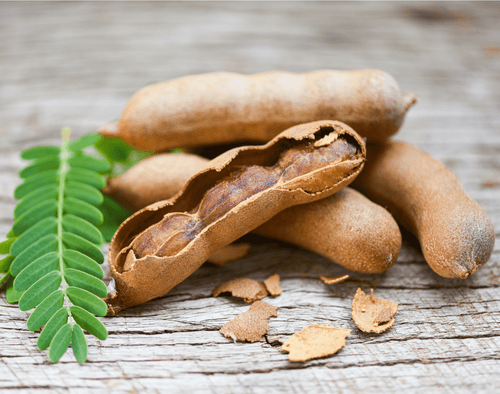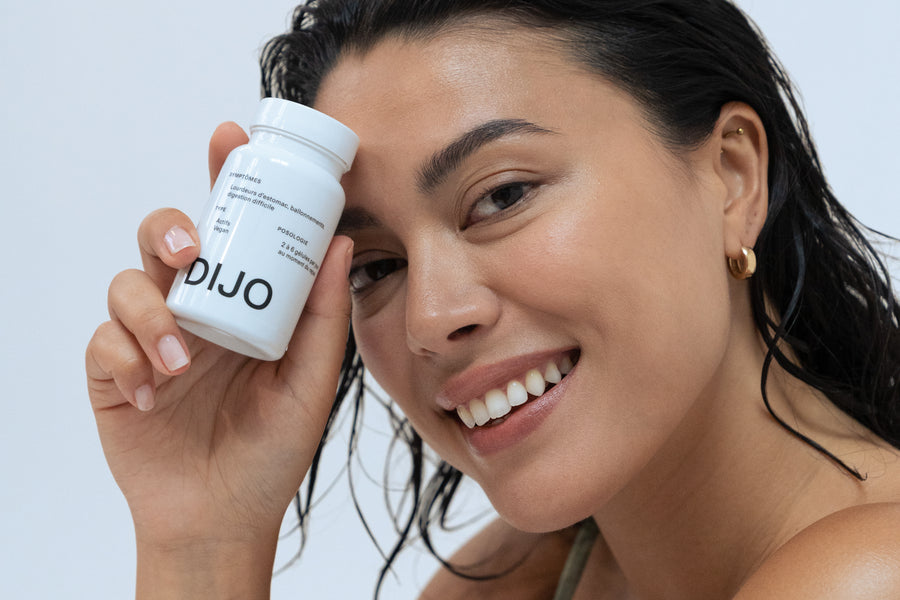What to remember :
- Hyaluronic acid is one of the major components of skin tissue.
- Hyaluronic acid is a hygroscopic molecule that can be loaded with water (up to 1000 times its weight!)
- It provides the skin with hydration, elasticity and tone.
- It reduces the first signs of skin aging (sagging, dryness and loss of volume).
- It protects the skin from external aggressions (UV, pollution, bacteria, etc.) by strengthening the skin barrier.
What is hyaluronic acid?
Hyaluronic acid is a large molecule composed of a glucuronic acid and an amino sugar,N-Acetylglucosamine .
Hyaluronic acid is an essential molecule for supporting the skin. Naturally present in the epidermis and dermis, it acts like a “water sponge.” A hyaluronic acid molecule can retain up to 1,000 times its weight in water. Hyaluronic acid is a perfectly natural substance. Thanks to its humectant properties, it ensures hydration and allows the skin to retain its radiance and softness.
What are the benefits of hyaluronic acid?
Hyaluronic acid and skin
Hyaluronic acid, a compound with many benefits , is one of the main constituents of the skin, which is the largest organ in the human body. The skin's surface is in direct interface with the external environment and provides protection for the body. In order to cope with multiple daily aggressions (thermal, UV radiation and infectious agents), the skin forms a real physical and chemical barrier.
Hyaluronic acid is a high-molecular-weight molecule that can absorb water to maintain optimal skin hydration and contribute to its vitality. It also contributes to tissue regeneration and promotes healing, while strengthening the skin's natural barrier.
Hyaluronic acid and hair
Hyaluronic acid doesn't just hydrate the skin!
Hyaluronic acid also has moisturizing properties for hair. Just like skin, hair can become dehydrated due to a diet lacking in vitamins or repeated heat damage. These factors lead to degradation of the hair fiber and visible loss of hair. Hyaluronic acid will strengthen the hair structure and bring suppleness and shine to your hair.
The anti-aging benefits of hyaluronic acid
With age, hyaluronic acid production decreases and the skin naturally ages. The skin then becomes dry, loses volume, and sags. This inevitable physiological process of cellular aging can be accelerated by external factors such as UV radiation, air pollution, tobacco, alcohol, or poor diet.
Hyaluronic acid is a benchmark molecule in the fight against aging. Its powerful humectant allows it to fill spaces in the extracellular matrix, which forms the framework of tissues, and to slip between collagen fibers and elastin. This is how it gives firmness, elasticity, and freshness to the skin. However, with age, hyaluronic acid production decreases and the skin naturally ages. The skin will then dry out, lose volume, and sag.
The different hyaluronic acid treatments
Depending on its use, hyaluronic acid comes in different forms: creams, lotions, and serums. Thanks to the recognized benefits of hyaluronic acid, these treatments promise hydrated, plump, and smoother skin.
Using a high molecular weight hyaluronic acid molecule in a facial treatment will have a rather protective and firming effect on the skin. This large molecule will not be able to penetrate the skin barrier. The hyaluronic acid on the surface will prevent water from evaporating, bring freshness to the skin and protect it from external aggressions.
Hyaluronic acid injections can also treat skin problems (acne, blemishes, blackheads, etc.) and restore radiance to the complexion. However, these injections can cause bruising and swelling on the face, where the skin is thin and sensitive.
Some studies suggest that taking hyaluronic acid orally can restore radiance to the skin through deep action. Oral intake can significantly increase the body's natural stores. While hyaluronic acid is known for its many anti-aging and hydrating benefits , oral intake goes further. It will not only repair and strengthen tissues deep down, but also protect the body from oxidative stress. The skin will then glow from within.
Indication and dosage of hyaluronic acid
It is found in many supplements in powder, tablet or capsule form.
Hyaluronic acid is contraindicated in children under 12 years of age and pregnant and breastfeeding women. It is also contraindicated in people suffering from acute tissue inflammation, autoimmune disease, or cancer. If you are undergoing medical treatment, it is important to seek advice from your doctor before supplementing and to take hyaluronic acid away from treatment if permitted.
Bring hyaluronic acid to your body with DIJO
At DIJO, we have developed the Radiant Skin product that boosts your intestinal flora while allowing you to regain healthy skin and a natural glow. Indeed, we have included hyaluronic acid in the formulation of this product, a true beauty treatment, essential to regain your radiance. This product is also available in the symbiotic beauty pack , which combines prebiotics and probiotics to support the health and appearance of your skin, while maintaining a balance of intestinal flora and ensuring protection of cells against oxidative stress .
This treatment should be taken as part of a balanced lifestyle in order to obtain deep and lasting effects.
Sources :
[1] Oe, M., Sakai, S., Yoshida, H., Okado, N., Kaneda, H., Masuda, Y., & Urushibata, O. (2017). Oral hyaluronan relieves wrinkles: a double-blinded, placebo-controlled study over a 12-week period. Clinical, cosmetic and investigative dermatology , 267-273.
[2] Göllner, I., Voss, W., von Hehn, U., & Kammerer, S. (2017). Ingestion of an oral hyaluronan solution improves skin hydration, wrinkle reduction, elasticity, and skin roughness: Results of a clinical study. Journal of evidence-based complementary & alternative medicine , 22 (4), 816-823.
[3] Abatangelo, G., Vindigni, V., Avruscio, G., Pandis, L., & Brun, P. (2020). Hyaluronic acid: redefining its role. Cells , 9 (7), 1743.
[4] Papakonstantinou, E., Roth, M., & Karakiulakis, G. (2012). Hyaluronic acid: A key molecule in skin aging. Dermato-endocrinology , 4 (3), 253-258.
